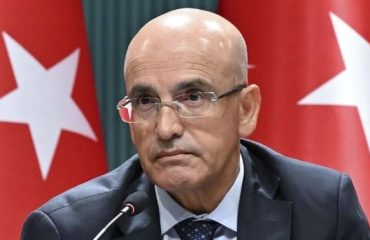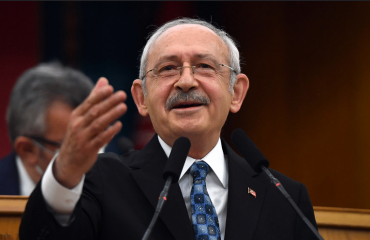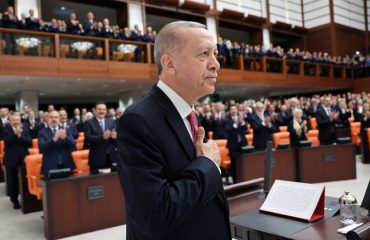
Turkish President Tayyip Erdoğan and U.S. Vice President Mike Pence had agreed on October 17 upon a 120-hour (five days) process for the Safe Zone deal in Syria. We were in the last 48 of that deadline as I was writing this article. As the countdown went on, details about how the countries came to this agreement began to come to light. If applied, this deal could decimate many of Turkey’s security concerns. Some of the details on the circumstances under which the parties reached the agreement are truly unbelievable. Erdoğan and Russian Head of State Vladimir Putin will meet in Sochi on Tuesday, October 22, 2019, only a few hours before the 120-hour countdown ends. U.S. President Donald Trump will, no doubt, keep a close watch on the said meeting too. I’m hoping to share some of these details once I double check and ripened the information I got.
But at this stage, it may be beneficial to pose a few questions to understand the situation Turkey is facing.
1- Erdoğan said on October 20 that what he means by “Safe zone, is a 440 kilometers-long and 32-km-deep area extending from Jarablus on the river Euphrates to the Syria-Iraq border, by the river Tigris. Which exact area is the 32-km-deep zone that the U.S. is promising to rid of the YPG/PKK? Is it the 120 km between Tel Abyad and Resulayn that the “Peace Spring” operation, “paused as of October 17? If so will theU.S.-Turkish deal be completed and the Turkish campaign will come to an end once this box is cleared from YPG/PKK militants?
2- Will the U.S. be able to withdraw those YPG/PKK forces from this 32-km-deep zone until midnight (or 22.00 according to one account) on October 22? Will the PKK comply with the American army?
Role of Russians, role of sanctions
3- Turkish Foreign Minister Mevlüt Çavuşoğlu said on October 20 that one of the main topics during Erdoğan-Putin meeting would be to extend the Safe Zone to 440 km since parts of the (totally 910 km border) are under the Russian-backed Syria regime forces. Does this comprise, in addition to Peace Spring campaign’s target zone, the area that includes Kobane (Ayn al-Arab) on its West side and Qamishli on the East?
4- Did NATO adversary Russia had a role in the U.S. and Turkey reaching an agreement as two NATO allies? If so, what was Russia’s role here?
5- What other factors, other than Russia, have had a part in Turkey’s decision to reach an agreement with the U.S.? Was it the reopening of the Halkbank case a day before the agreement? Was it the new sanctions proposed in the U.S. Congress, including an investigation into the “worth and assets” lth of Erdoğan and his family members, or the proposal to investigate all companies and banks backing the Syria campaign? Had these played into the agreement decision? Has the fact that these matters were discussed between Turkish and American technical committees as they prepared for the meetings on October 16 and 17 facilitate the agreement?
6- Erdoğan had said on October 16 that he would only address his U.S. counterpart Donald Trump and that he wouldn’t meet Pence. Why then, on October 17, has he accepted to have a 1 hour 20 minutes-long one on one talk with Pence? Why did he conduct the meeting between the delegations as equals with Pence -to which the Turkish press was not allowed to enter?
7- Erdoğan said on October 19 that they had made a deal with the U.S. but if the U.S. fail to “clear the region of terrorists and destroy the fortifications” within the 120 hours agreed upon, then the campaign would resume “at that very moment”. Trump on the other hand said in a Tweet message on October 20 that the process was going well. Should the U.S. demand to extend the deadline during the process of discussion with Putin, and considering the possible strains on the economy, could Erdoğan choose to indeed extend the deadline?
8- Putin’s private representative Aleksandr Laventyev whom Erdoğan’s Top Foreign and Security Adviser İbrahim Kalin had had a meeting with on October 17 right before the meeting with Pence, went to Damascus on October 19 to meet with Bashar al-Assad. Does this have to do with the enlargement of the safe zone from 120 to 440 km?
Where will all those YPG/PKK militants go?
9- Again on October 19, Erdoğan said that he will order to launch campaigns to other regions too if need be. The Syrian army has already entered Kobane and Qamishli is partially controlled by the Damascus government. Could it be possible to embark on such campaigns without consulting the 1998 Adana Protocol, which requires direct cooperation Assad’s government?
10- Russian authorities stated on October 16 that Turkish and Syrian foreign and defence ministries and intelligence services have been in contact “real-time”. On the same day, Russian foreign minister Sergey Lavrov had said that the solution laid in the Adana Protocol. In this case, will Putin tell Erdoğan to cooperate with al-Assad even if they don’t personally make peace?
11- Should the YGP/PKK comply with the U.S.’s request following the agreement with Turkey, where will they go? To Iraq along with the U.S. soldiers? Will their salary start coming from Russia instead of the U.S., making them merely change uniform and become part of the Syrian army? Or will they send their militants, who have been highly trained by U.S. officials for the past five years, off to perform militant actions in Turkey? Are these issues addressed with Russia as well?
12- If parties should keep their promises and a Safe Zone of 120 to 32 km is established will it be possible to ensure some of the Syrian refugees (a total of 3.6 million) in Turkey can go back? Mentioning the project to build new towns and villages for the refugees in the Safe Zone to encourage their return, Erdoğan said in the Parliament on October 1 that around 1 million refugees could return. Turkish officials are working on plans for the resettling of 300 to 500 thousand refugees in the current operation zone. Does international law allow the building of new cities for refugees? If so, who will fund this?
13- Will UN Secretary-General Antonio Guterres and President Erdoğan discuss this issue during the İstanbul mediation Conference on October 31, a day after the Syrian Constitution Committee’s meeting that will take place in Geneva on October 30?
And a photo-analysis…
Is the picture too complicated? It is indeed. There’s also something that personally intrigues me, though because it’s personal, I haven’t added it to the list above. Two figures come to prominence in this whole scenario: Foreign and Security Adviser İbrahim Kalın (and his post is the equivalent of former National Security Council Secretary-General) and U.S. Special Representative Jim Jeffrey. Jeffrey has his seat in the inter-committee meetings. I’m sure Kalın, too, was there but it looks like he wasn’t given a place at the table; at least, that’s what I can make out from the photo. Trump’s National Security Adviser Robert O’ Brian is pictured sitting across Foreign Minister Mevlüt Çavuşoğlu and across American Ambassador David Satterfield sits Turkish Treasury and Finance Minister Berat Albayrak, who had sparked a debate in financial circles by not showing up to the IMF meetings. But as I’ve said, I didn’t want to include these details on the above questions as they did not directly relate to the issues at hand.
I hope that I’ll be able to share my insight on these issues and answer a good number of these questions in the light of backstage developments, before Erdoğan meets Putin on October 22.


